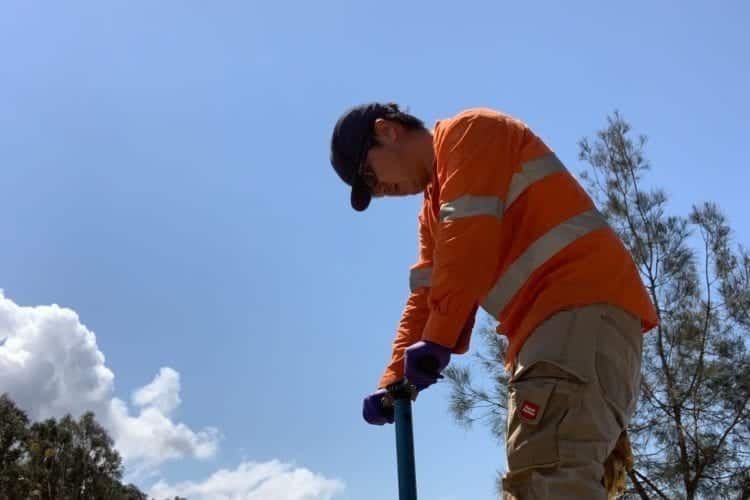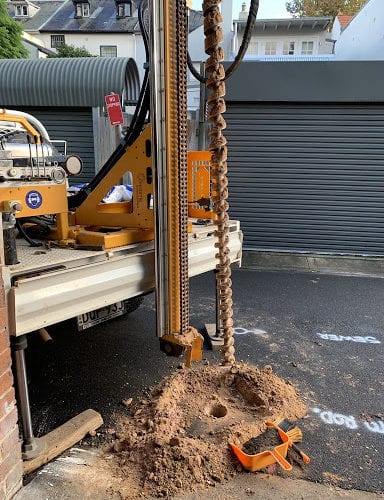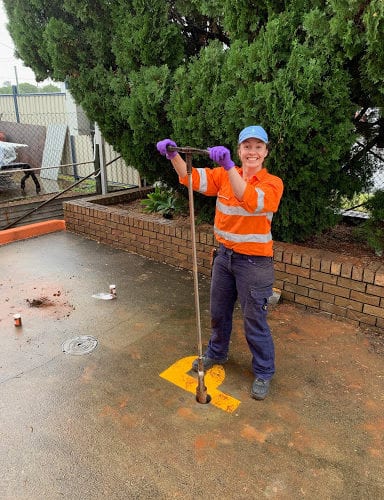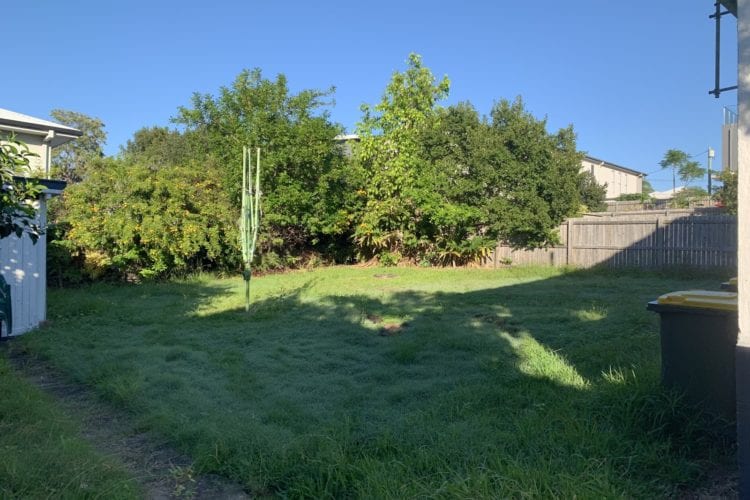Preliminary Site Investigations (PSI)

iEnvi provides environmental investigations at the desktop or initial stage of investigation including preliminary site investigations (PSI) and desktop environmental due diligence (EDD).
Being able to assess risk at this early stage of investigation is critical to ensuring significant contamination is not overlooked, and that reports are accepted by regulators and financial institutions. Our Certified Environmental Practitioners Site Contamination Specialists (CEnvP CS Specialists) are available to design and review our due diligence/PSI projects.
Contamination of properties can cause the property asset to have a negative value (or worse) and is often underestimated in terms of importance in decision making, negotiations, and liability risk. Depending on the project requirements and use of the PSI report, iEnvi may include a scope that is a desktop review only, or include limited sampling as part of the PSI.
Our clients often need these services for mergers and acquisitions (M&A), buying or selling properties, and for finance using a property as collateral. The initial investigations can help determine the potential environmental liability at a property, which can help with financing, determination whether to do further contamination investigation, suitability of a site for a proposed use, and risk.
What is a Preliminary Site Investigation (PSI) and environmental due diligence, and when is it required?
A PSI / environmental due diligence is essentially the first step in investigating risk associated with contamination under Australia’s national environmental guidelines.
We service the whole of Australia in providing PSIs for a wide range of industries and developments from our offices located in:
- Brisbane, Queensland (QLD)
- Sydney, New South Wales (NSW)
- Melbourne, Victoria (VIC)
Not every property requires a Preliminary Site Investigation (PSI), but yours might. The purpose of a PSI is to assess the potential for contamination of a site.
Typical triggers of a PSI include:
- As part of your due diligence before you buy or sell a property, often required by financiers;
- Your development application or planning permit may include a PSI as a council requirement;
- Immediately preceding an application for change of land use;
- Before an excavation of the subsurface;
- Part of mergers and acquisitions processes, for the portfolios of properties;
- Part of establishing a baseline of contamination conditions prior to lease or sale; and
- Part of your lease conditions.
Your Preliminary Site Investigation will begin with a review of your property’s history. This is completed by the investigator off-site using historical government databases, historical aerial photographs, geological, groundwater, reports and other documents, planning drawings, and other available records. It is often referred to as a “desktop study”.
In addition, you can choose to have a site inspection conducted, where the investigator may need to ask some questions of everyone concerned, and walkover the property to make observations – this will take longer for industrial properties. Sometimes soil samples are taken during the PSI. This will depend on the nature of the reason you require a PSI, and the potential for contamination for the property. It is more cost effective to include soil sampling during the PSI, and this further reduces the risk substantially and increases certainty for potential purchasers.
Then you get your report. If your site has potential for contamination, the report will explain what the chemical contaminants are and where, and how this may be a concern for the current and future planned use of the property. The report will also explain what steps need to be taken next to investigate further. This is simply a preliminary report, but it is very detailed.
It is possible to “pass” a PSI, and have a property cleared as having a low risk of contamination and low contamination risk to people and the environment. Sometimes further investigation is not required.
The objective of the PSIs to help determine the potential for risk to human health and the environment from both current and historical, onsite and offsite land contamination.
Our overall approach to contamination and suspected contamination
Quick Enquiry
1. Preliminary site investigation
This is a paper based study that investigates the known history of the site, including its use and can provide good evidence on the the scale (if any ) of the contamination. We also look to the neighbouring geography to look for cross contamination. For many clients looking to cover their bases this might be as far as you need to go. If you need to go further it is an effective tool in fine tuning your onsite testing to reduce time and cost required.2. On site testing (DSI)
Based on the outcomes of our PSI or evidence you have collected from the site our next stage is to conduct sampling on site (a detailed site investigation - DSI). A sampling, analysis and quality plan (SAQP) is developed to make sure we sample the right locations and depths, and test for targeted types of contamination. Sampling may include soil, groundwater, surface water, building materials, or gas/air. We test general or targeted locations, and will often try and determine if any contamination has migrated off your site.3. Site remediation
Based on the results our field tests and the intended land use we progress from a Tier 1 up to Tier 3 risk assessment. If that indicates an unacceptable risk to human and ecological receptors, we develop a customised remediation action plan (RAP) which assesses remediation options and outlines the best fit for the project and how the remediation should be implmented. Where appropriate we will engage technical specialists and contractors that we know and have used for many years and take care of all the management of the entire project, with regular reporting to you!.
psireport.com
Like to do this all online? At psireport.com.au we offer four levels of environmental background investigation and reports reviewed by a Certified Environmental Professional in Australia’s first online shop. You can choose what you need quickly for the best price and fastest delivery. The options are:
- Environmental desktop records and summary letter
- Desktop Preliminary Site Investigation (PSI), not including a consultant site visit.
- Preliminary Site Investigation (PSI), including a consultant site visit, without soil sampling.
- Preliminary Site Investigation (PSI), including a consultant site visit, with soil sampling and laboratory analysis of a comprehensive standard suite of contaminants.
More details are located here: https://www.psireport.com.au/option-guide/.
Our daughter business – psireport.com.au provides businesses and individuals a no-fuss, highly cost and time effective means of acquiring the environmental reports on what lies beneath the ground, without the hassle of dealing with consultant quotes, wait times and added expense.
Speak to us at [email protected] or try our online 2 minute PSI quotation portal if you prefer easy, quick no-nonsense payment and delivery.
RECENT PROJECTS

Environmental Delineation Investigation at Industrial Site in Northwest Sydney
Project Overview: iEnvironmental Australia (iEnvi) conducted a Delineation Investigation (DI) at anindustrial site located in the northwest of Sydney, following...

Compliance Investigation &Cost-Effective Remediation and Beneficial Reuse of Asbestos-Impacted Soil at Industrial Site in Victoria
The Victorian EPA requested an investigation at an industrial site in Coolaroo to meet General Environmental Duty requirements. iEnvironmental Australia...

iEnvi's 100 Contaminated Land Experts in 2022!
iEnvironmental Australia's growth in the market means that we're looking at expanding our network of sub-consultants (independent contractors), with a...

Major NSW Infrastructure Project, Environmental Sampling and Waste Classification
iEnvironmental Australia (iEnvi) was engaged by Transport for NSW (TfNSW) to provide waste classification and beneficial reuse assessment near the...

Former Oyster Farm Investigation for Residential Development
iEnvi was engaged by the client to complete a Targeted Soil Assessment relating the footprint of a shed previously located...

UPSS Abandonment Insitu Via Foam Filling, Sunshine Coast QLD
iEnvi was engaged by a local restaurant owner to manage the decommissioning and abandonment of three underground storage tanks (USTs)...

Construction Environmental Management Plan for a Sports Complex, South East QLD
iEnvi were engaged by an engineering firm on behalf of a regional council to undertake a Construction Environmental Management Plan...

Microbiologically Influenced Corrosion Preliminary Study, Mornington Peninsula VIC
Microbiologically Influenced Corrosion (MIC) is a term that refers to the change (either acceleration or inhibition) in corrosion caused by...

Waste Classification and ENM Assessment, Southern Highlands NSW
iEnvi was engaged by a local council in the Southern Highlands to conduct an insitu Waste Classification (WC) and...

Erosion Sediment Control Plan (ESCP), Mornington Peninsula, VIC
Envi was engaged by a construction company to review and update the erosion sediment control plan (ESCP) as part of...

Urgent Preliminary Site Investigations for M&A, Multiple Sites QLD, NSW, SA
iEnvi was engaged by a law firm on behalf of a confidential client as part of merger and acquisition...

Groundwater and Hydrogeological Investigation of 5 Landfills, QLD
iEnvi was engaged by a Council north of Brisbane, QLD, to review environmental authority (EA) compliance, groundwater trends and risks...

Targeted Soil Investigation and Insitu Waste Classification, Brisbane, QLD
iEnvi was engaged by a large construction company to conduct Targeted Soil Investigations and Insitu Waste Classifications (TSI/WC) in advance...

Targeted Soil Investigation, North of Brisbane, QLD
iEnvi was engaged to conduct a Targeted Soil Investigation (TSI) to delineate historical lead from a former rifle range, for...

Soil Stockpile Reuse Investigation, Sydney NSW
iEnvi was engaged by an inner western Sydney Council to undertake a soil stockpile reuse investigation at a vacant property....

Preliminary Site Investigations for Potential Acquisition, VIC and WA
iEnvi was engaged by an international manufacturing company to undertake preliminary site investigations at two coatings manufacturing facilities in Victoria...

Environmental Management Plan for a Brewery and Wastewater Treatment Plant, Goulburn NSW
iEnvi was engaged by a brewing company to complete an Operational Environmental Management Plan (OEMP) for a new brewery...

UPSS and Detailed Site Investigation for a Rural Service Station in Far North Queensland
iEnvi was engaged by a company to complete an Underground Petroleum Storage System (UPSS) and Detailed Site Investigation (DSI) for...

Law firm engagement for Preliminary and Detailed Site Investigation of Former Service Station, Inner Sydney NSW
iEnvi was engaged by a law firm to complete a preliminary site investigation (PSI) and underground petroleum storage system (UPSS)...

Preliminary Site Investigation of a mechanic workshop for finance approval, Wynnum QLD
iEnvi was engaged by a private company wishing to purchase a mechanic workshop in Wynnum, Queensland and a preliminary site...

Innovative and cost-effective soil investigation, Sydney NSW
In early 2019, iEnvi completed multiple preliminary site and soil investigations at recreational use parks in inner Sydney suburbs prior...

Cost Efficient Remediation for Hydrocarbon Contamination, Newcastle and Wollongong, NSW
iEnvi was engaged by a client’s legal department as part of a merger and acquisition due diligence to undertake preliminary...

Soil Investigation and Potential Soil Reuse, Brisbane QLD
iEnvi was engaged by a childcare centre development company to undertake soil sampling at a residential site prior to the...

Housing Development Application, Sydney NSW
iEnvi was engaged by a client to undertake a preliminary site investigation and soil sampling (PSI) at a property in...
Some of the organisations our expert team have helped






